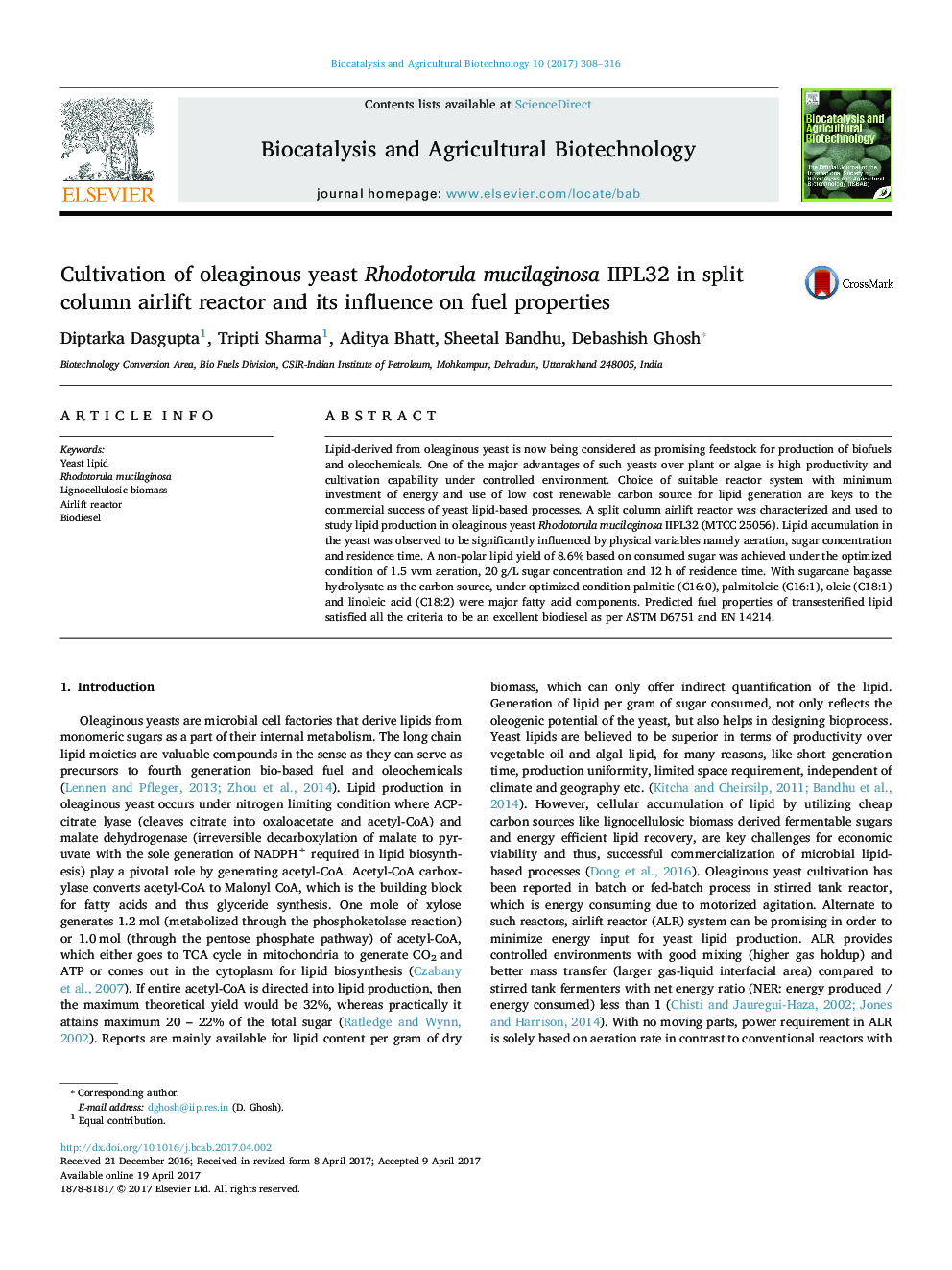| Article ID | Journal | Published Year | Pages | File Type |
|---|---|---|---|---|
| 5520472 | Biocatalysis and Agricultural Biotechnology | 2017 | 9 Pages |
Lipid-derived from oleaginous yeast is now being considered as promising feedstock for production of biofuels and oleochemicals. One of the major advantages of such yeasts over plant or algae is high productivity and cultivation capability under controlled environment. Choice of suitable reactor system with minimum investment of energy and use of low cost renewable carbon source for lipid generation are keys to the commercial success of yeast lipid-based processes. A split column airlift reactor was characterized and used to study lipid production in oleaginous yeast Rhodotorula mucilaginosa IIPL32 (MTCC 25056). Lipid accumulation in the yeast was observed to be significantly influenced by physical variables namely aeration, sugar concentration and residence time. A non-polar lipid yield of 8.6% based on consumed sugar was achieved under the optimized condition of 1.5 vvm aeration, 20Â g/L sugar concentration and 12Â h of residence time. With sugarcane bagasse hydrolysate as the carbon source, under optimized condition palmitic (C16:0), palmitoleic (C16:1), oleic (C18:1) and linoleic acid (C18:2) were major fatty acid components. Predicted fuel properties of transesterified lipid satisfied all the criteria to be an excellent biodiesel as per ASTM D6751 and EN 14214.
